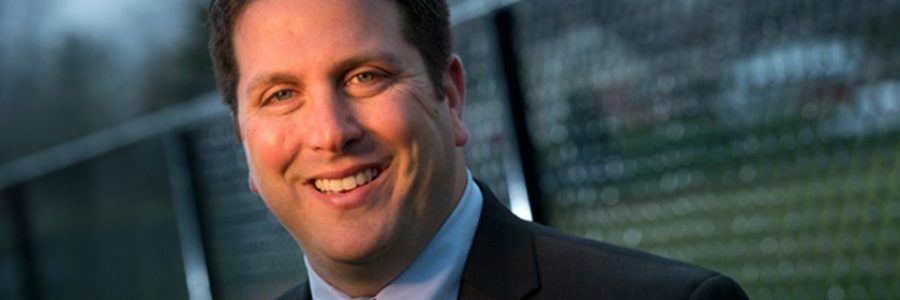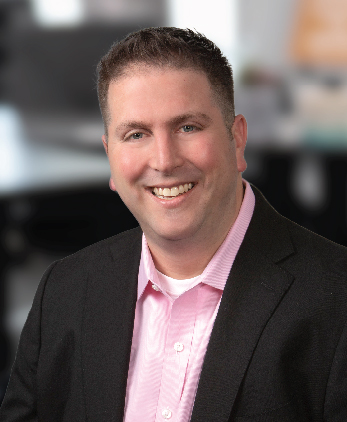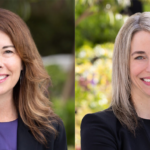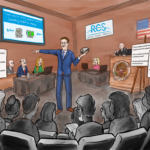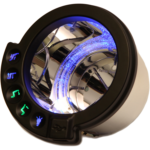Robert Rosenberg sees himself as a translator between attorneys and jury members.
The president of Rosenberg Consulting Services, he organizes information, electronic evidence and exhibits into easily accessible electronic files that can be accessed at any point during a trial.
“Attorneys have a lot of evidence and information they want to share with juries and that needs to be conveyed to juries in a way they can easily understand,” he said. “One way to do that is using a visual format.”
Rosenberg’s business covers a broad range of services, from putting together those easily accessible presentations for attorneys, surveying a courtroom in advance and installing the appropriate equipment to creating 2-D and 3-D illustrations or quickly producing the necessary documents for attorneys.
Rosenberg has been around the legal profession for most of his life. His family owned a court reporting business in Chicago that was later sold to Esquire Deposition Solutions. His first job with the firm was videotaping depositions.
“Honestly that was kind of boring, so I looked for other things to do, and as technology evolved I saw that as a way to help attorneys present evidence,” Rosenberg said. “Attorneys have the information and we just take that information and make it so anyone can understand it. By putting evidence in a visual format you can really connect with jurors.”
Nearly all of Rosenberg’s work involves civil lawsuits, particularly those involving intellectual property. Presenting evidence in a way that’s easy for jurors to understand is paramount in those cases.
“The presentations are put together in a non-linear format, so at any point in time an attorney can access what they are looking for,” Rosenberg said. “I really enjoy the trial phase of the law and how all that legwork comes together into a great evidence presentation.”
Rosenberg admitted that 95 percent of what he does is “self-taught. There’s not a lot of people who do what I do, but people hear about you and what you’ve done and the word spreads. Word of mouth is always the best form of advertising.”
Wisconsin Law Journal: What makes your work important to you?
Robert Rosenberg: Knowing that the work I do and service we provide help make a difference in the outcome of a case. I often get approached to help bridge the communication gap between the legal world and the average person using visuals. Being able to do that and help achieve great results in the courtroom makes it all worth it.
WLJ: Who is your hero in the legal field?
Rosenberg: I’ve had many people that have influenced my career. Two in particular have shaped who I am and helped me and many others get a jumpstart on our careers. Kim Taylor, whom I worked for early in my career, would never let me say that I had a problem — only challenges. That paved the way for a particular set of ‘challenge-solving skills’ that I use to this day. The second was attorney Robert (Bob) F. Coleman. His sense of humor, class and unwavering devotion to his family and the law made me believe that no matter what we were working on — that it had to be fun. Otherwise, what’s the point? These two individuals helped shape the philosophy of our organization: Work on good cases for good clients and have fun doing it.
WLJ: What do you do outside of work to deal with stress from the office?
Rosenberg: I like to volunteer at my children’s schools, play tennis and have unyielding passion for tinkering with electronic toys. My wife and I also like to travel quite a bit. We have learned over the years that it is important to detach ourselves periodically from our routines.
WLJ: What’s one thing many people get wrong about what you do?
Rosenberg: Most people don’t even realize that my type of job exists. When I tell people that I am a trial consultant, they often mistake me for a jury consultant. Our work, while having some overlaps, is very different from that of a jury consultant.
WLJ: Is there a certain case that stands out to you?
Rosenberg: The case that stands out to me the most would be the Gaylord Chemical matter related to the chemical release in Bogalusa, La. Our team spent the better part of six months down in Franklinton, La., for Daubert hearings and for a two-phase trial. I was consulting for one of the world’s largest law firms and had a trial team of over 30 people. It was an amazing collection of talented people. My favorite part was when the senior partner in charge of the case said to the team that he expected that everyone from partners to secretarial staff be treated with respect. That set a tempo for a positive attitude in our war room throughout the entire trial.
Click here for the original article: http://wislawjournal.com/2016/04/13/technically-speaking-rosenberg-helps-attorneys-craft-their-cases-visually/
